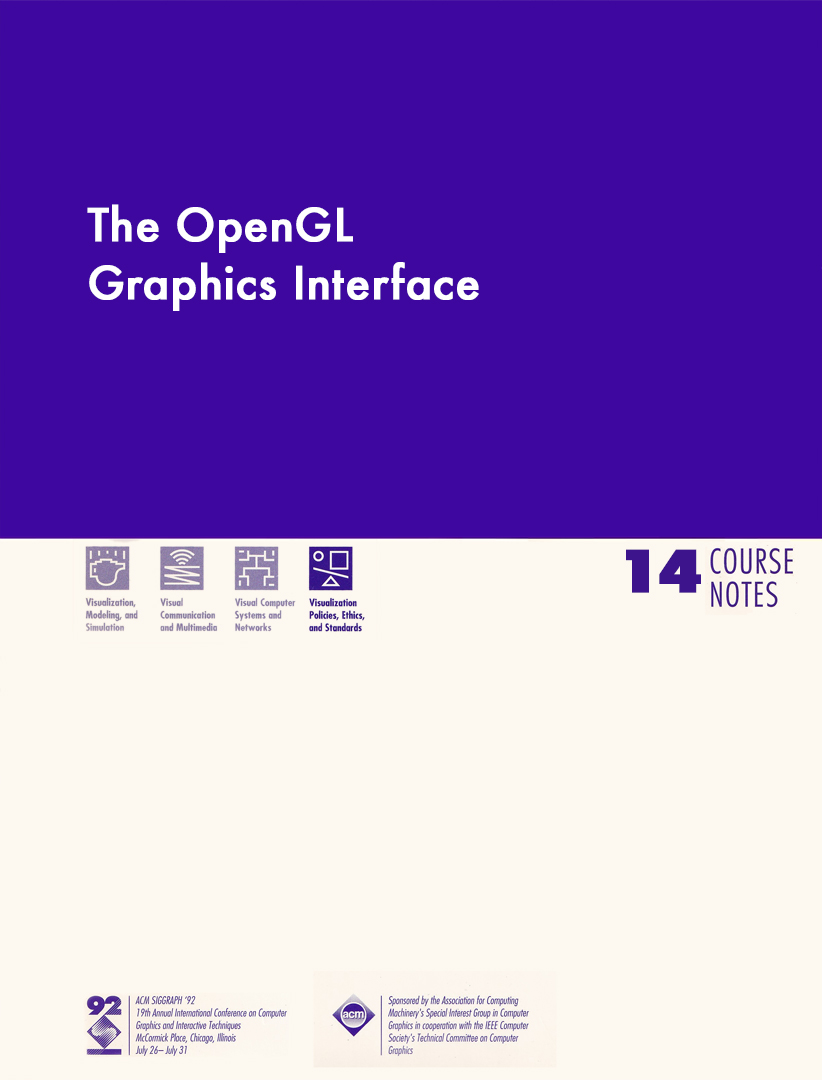“The OpenGL Graphics Interface” by Rost, Akeley, Segal, Vepstas and Woo
Conference:
Type(s):
Entry Number: 14
Title:
- The OpenGL Graphics Interface
Organizer(s):
Presenter(s)/Author(s):
Abstract:
Intermediate
A working knowledge of 3D computer graphics (e.g. transformations, rasterization, texture mapping). Programming experience with a high level 3D graphics library is highly recommended.
Who Should Attend
This course is intended for interactive 3D application programmers who want to use OpenGL. People interested in implementing OpenGL on different platforms also will find this course useful.
Objectives
Participants without previous GL experience learn an immediately applicable subset of OpenGL in order to write 3D graphics applications using advanced features, such as lighting, anti-aliasing, and texture mapping. Participants with previous GL experience gain knowledge to part existing GL applications to the multi-vendor supported OpenGL interface.
Description
OpenGL is a procedural interface that supports interactive 3D graphics. It provides developers access to both simple and advanced rendering techniques. Basic capabilities of OpenGL include support for viewing, lighting, and shading. Advanced features include anti-aliasing, texture mapping, and control over accumulation buffers, stencil buffers, and auxiliary buffers. OpenGL is designed to be window-system neutral. This course covers the use of OpenGL, explores the philosophy which should be used by application implementers, highlights differences from previous versions of GL, and describes the multi-vendor organization that supports the OpenGL effort.
Contents/Schedule PDF:
Contributed By:
- Mary Whitton
Location:
- Charles Babbage Institute Archives, University of Minnesota





